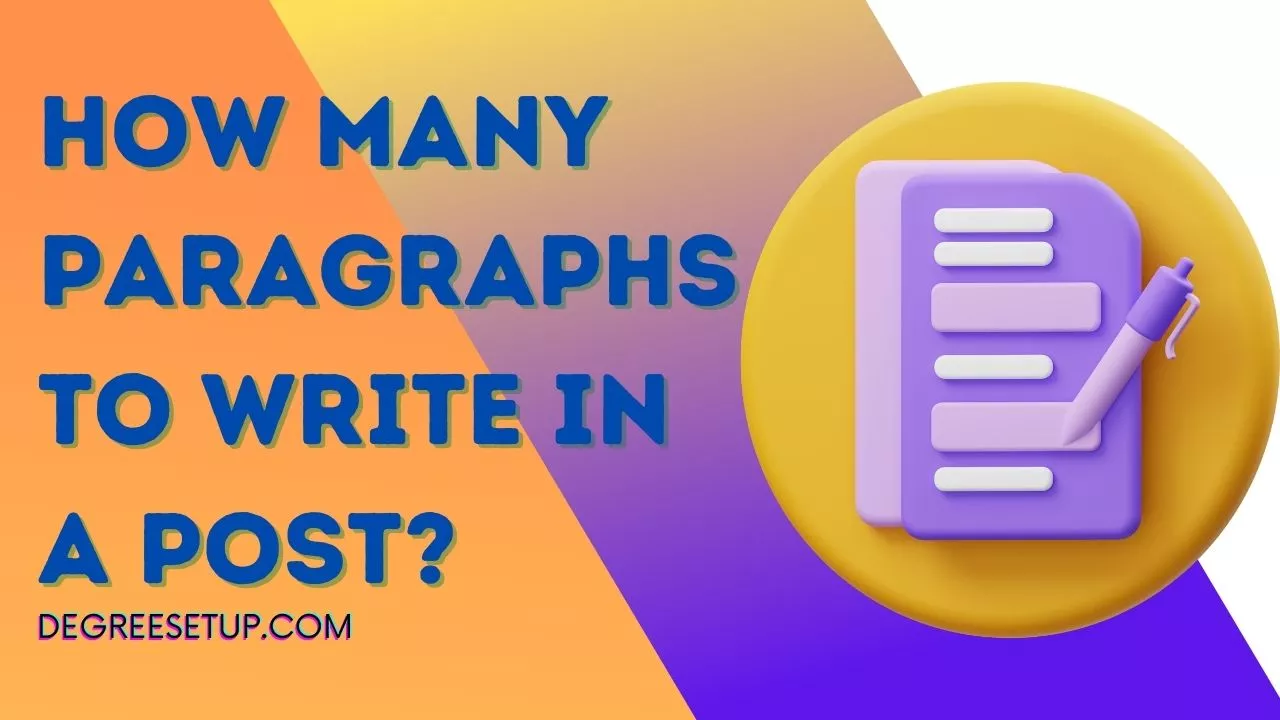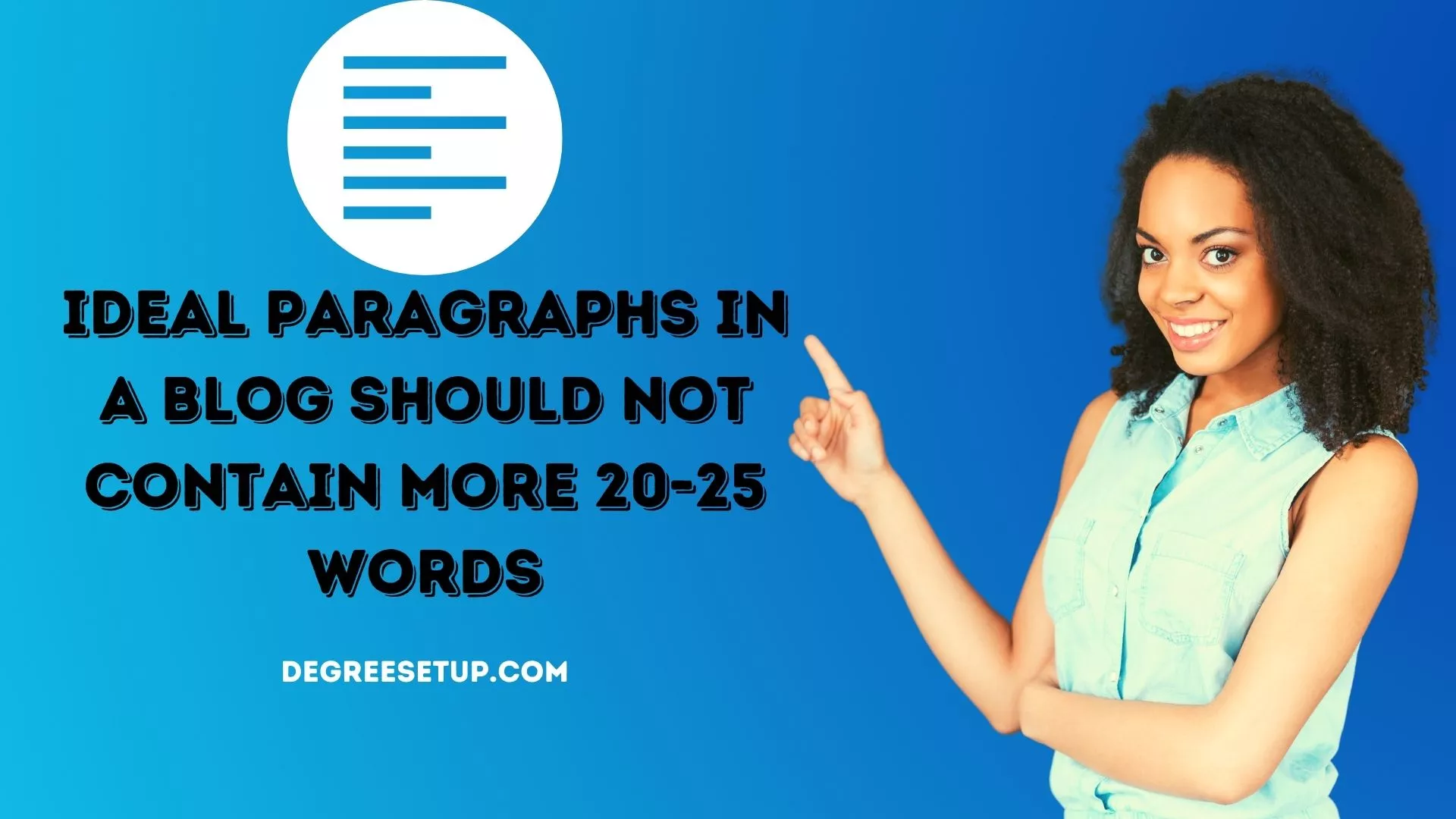
Are you here to know how to write a paragraph in blog posts?
Content writing is an art, and with increasing competitiveness, blogging is getting more challenging.
But don’t worry. At degreesetup.com, you get to know trustworthy information about content writing and blogging.
Here I will share some tips that I have been personally using. These tricks have given me great results and loyal visitors to my site.
Paragraphs in any content can make it or break it. This means if you know how to present your content using some tips, it can rank better, whereas if you write the same content just by following no rules, there are fewer chances that it will reach the users.
If you are a new blogger, it is highly recommended that you read this post to avoid mistakes like what I did and write content that would be better for other content writers.
Tips for writing the best paragraphs in blog posts.

These tips you can apply to your blog and write better will help your content get optimized and help you grow your content. Here you will get to know how many words you can write to make your blog post information at the same time stand out from others.
Writing paragraphs and focusing on them help visitors and gives an advantage from an SEO point of view. Read this documentation of google: SEO starter guide.
1. Start with a question.
When you start writing anything in your blog, make sure to ask a question to your readers or put the question in first. Using this trick, you can engage visitors so they can read further.
You can see how you can start writing the first line of your post below.
You must be searching about writing paragraphs isn’t it?
Well, most of the time, this method works. But it is recommended to use this on informational, review, and knowledge posts.
Related: How many images to use in a blog post?
2. Answer directly.
After a few introduction lines, answer your main query about what the visitors are looking for. The answer will help you rank on the first page.
Answering directly makes your visitors save time; the chances of an increase in the blog’s authority become high.
Generally, the answer target should consist of 200-250 words. You can write more, but only a few words are displayed on SERP pages.
Include headings and bullet points.
Writing paragraphs after paragraphs are not enough. You have to break down your main content into pieces and use small headlines such as H2 and H3 to break down the content.
Between each heading, you can write 200-300 words or more if the information you want to provide information in detail.
Also, include bullet points, tables, and block editors if you use WordPress as your CMS.
3. Use short paragraphs.
If you are reading this, you must have observed that the content I have written here has 20-30 words in each paragraph. I have also considered smartphone and mobile users as most traffic comes from mobile devices.
Shorter paragraphs are easier to read and make visitors comfortable understanding a topic well.
4. Write in casual English.
It doesn’t matter if you have a good command of English and speak better than others. While writing a blog post, you have to use casual English in your paragraphs.
It should be easy and understandable even by an 8-year-old kid. Also, try to write complex things and present them using simple words. Using this way, more people can read your blog than those who don’t have one.
5. Avoid using complex words.
In any web content, you should avoid using complex words which need to be searched after reading the post in your paragraphs.
This practice can reduce user retention on your blog, and users may jump to others’ blogs for much simpler information.
6. Add punctuation marks.
Punctuation marks are a must-use. This helps readers and provides information to search engines about the paragraphs.
Use full-stop, exclamation points, commas, semicolons, colons, and dash. This makes the sentence easy to read and looks elegant in the paragraph.
7. Add links with helpful information.
Whenever you write a blog post between sentences, please link to them if you use someone’s information.
Linking to credible and authoritative sources can make your site rank can easily. You can also internal link your related post to make users read more between paragraphs.
How many paragraphs should you write in a blog post?
It will be hard if you count paragraphs and their words when after writing the post. But from an SEO perspective.
If you are using WordPress, it would be easy to analyze the paragraphs. However, it is not necessary to do so. But paragraphs count; you can know how much content you have written.
Here’s the table for paragraph counts according to to post blog length to make it easier.
You can assume an average of 25-30 words in each paragraph.
| Blog post length(Words) | Paragraphs count |
|---|---|
| 500 words | 20-25 para |
| 1000 words | 45-55 para |
| 1500 words | 70-75 para |
| 2000 words | 95-110 para |
| 2500 words | 130-140 para |
| 3000 words | 160-170 para |
| 3000+ words | 190-210 para |
The above table is just for reference and recommended for those who practice SEO while writing content. However, if you go for writing long paragraphs, it is excellent, but to make your readers feel good, introduce small pragraphas too.
Conclusion
If you had spent time learning about SEO, you must have focused now on finding the right keywords. But that’s not all. After finding the topic, you must know how to present the content.
And Paragraph headings, images, tables, and lists add value to your content. Make sure to practice using all these things in your post. And stay tuned and continue reading here at degreesetup.com.
Paragraphs in blog posts FAQ
How much does it take to write a paragraph in a blog post?
2-3 minutes should it take you from writing to editing a paragraph in your blog post?
How to check paragraphs for errors?
You can use any online tool to check errors in your content. Grammarly is among one of the best grammar and text editing tools out there.


